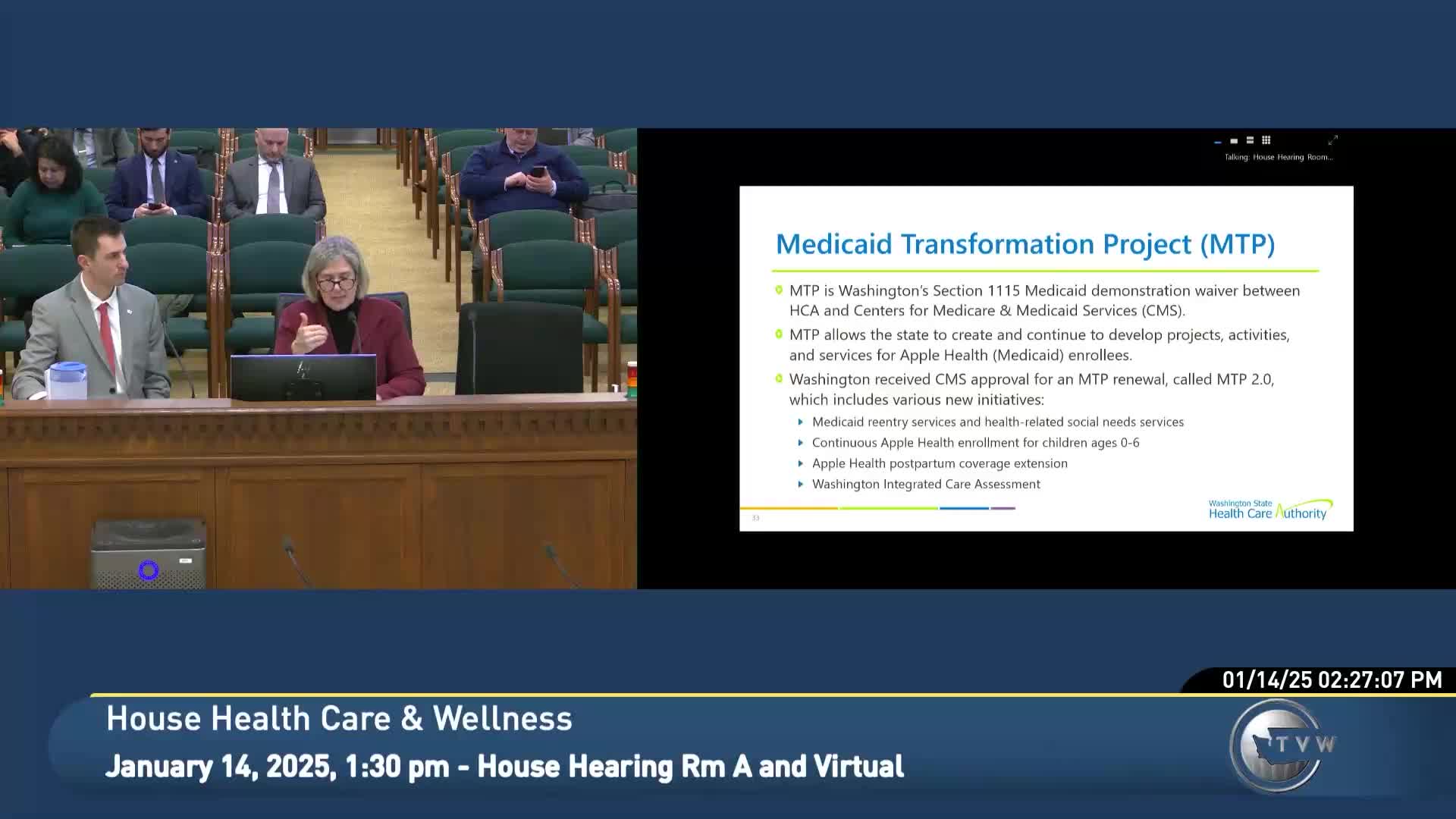JLARC recommends extending customized workforce training B&O tax credit; use has declined
January 14, 2025 | Health Care & Wellness, House of Representatives, Legislative Sessions, Washington
This article was created by AI summarizing key points discussed. AI makes mistakes, so for full details and context, please refer to the video of the full meeting. Please report any errors so we can fix them. Report an error »

JLARC told the House Finance Committee on Jan. 14 that the business-and-occupation tax credit for customized workforce training met the Legislature’s repayment-based performance metric and should be extended, but usage of both the credit and the underlying training program has declined substantially.
The credit covers 50% of training costs delivered through the State Board for Community and Technical Colleges’ customized training program. JLARC reported the program’s revolving loan fund peaked at about $330,000; businesses repay 25% of the loan cost upon training completion and the remaining 75% over 18 months, with the Department of Revenue issuing a credit worth 50% of each payment.
Between 2018 and the end of 2023, 27 businesses used the program for 31 trainings; 24 loans had been repaid and seven were in active repayment. JLARC concluded the Legislature’s condition for extension—at least 75% of businesses complete training and repay—was met, and recommended extending the preference (current expiration date July 1, 2026) and directing the State Board to increase program use in more counties and industries and report progress to legislative committees. The citizen commission also suggested adding money to the loan fund to support expansion; the state board concurred and said it is already exploring ways to broaden use.
JLARC noted geographic concentration: four colleges conducted 81% of trainings and 85% of participating businesses were located in King, Pierce, Snohomish and Thurston counties; nearly 80% of participating businesses were manufacturers. Committee members did not raise objections during the presentation.
The credit covers 50% of training costs delivered through the State Board for Community and Technical Colleges’ customized training program. JLARC reported the program’s revolving loan fund peaked at about $330,000; businesses repay 25% of the loan cost upon training completion and the remaining 75% over 18 months, with the Department of Revenue issuing a credit worth 50% of each payment.
Between 2018 and the end of 2023, 27 businesses used the program for 31 trainings; 24 loans had been repaid and seven were in active repayment. JLARC concluded the Legislature’s condition for extension—at least 75% of businesses complete training and repay—was met, and recommended extending the preference (current expiration date July 1, 2026) and directing the State Board to increase program use in more counties and industries and report progress to legislative committees. The citizen commission also suggested adding money to the loan fund to support expansion; the state board concurred and said it is already exploring ways to broaden use.
JLARC noted geographic concentration: four colleges conducted 81% of trainings and 85% of participating businesses were located in King, Pierce, Snohomish and Thurston counties; nearly 80% of participating businesses were manufacturers. Committee members did not raise objections during the presentation.
View full meeting
This article is based on a recent meeting—watch the full video and explore the complete transcript for deeper insights into the discussion.
View full meeting
